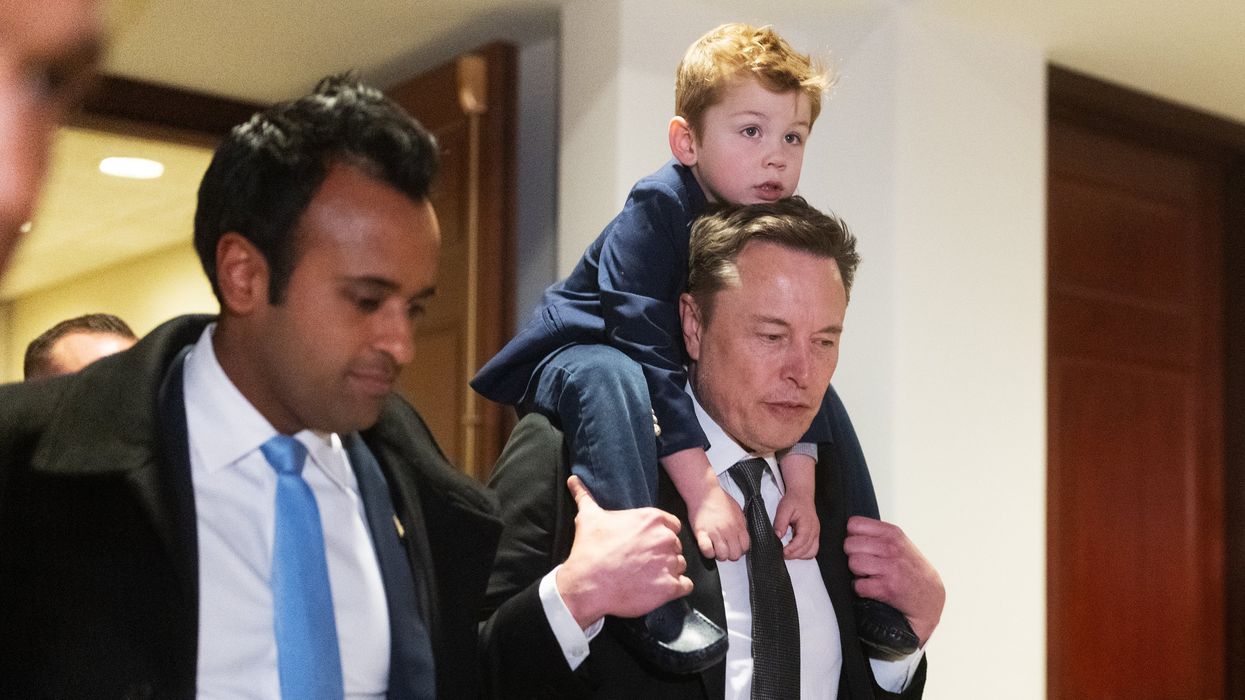This is the first entry in a series on the Department of Government Efficiency, an advisory board created by President-elect Donald Trump to recommend cuts in government spending and regulations. DOGE, which is spearheaded by Elon Musk and Vivek Ramaswamy, has generated quite a bit of discussion in recent weeks.
The goal of making government efficient is certainly an enviable one indeed. However, the potential for personal biases or political agendas to interfere with the process must be monitored.
As DOGE suggests cuts to wasteful spending and ways to streamline government operations, potentially saving billions of dollars, The Fulcrum will focus on the pros and cons.
We will not shy away from DOGE’s most controversial proposals and will call attention to dangerous thinking that threatens our democracy when we see it. However, in doing so, we are committing to not employing accusations, innuendos or misinformation. We will advocate for intellectual honesty to inform and persuade effectively.
The new Department of Government Efficiency, an advisory board to be headed by Elon Musk and Vivek Ramaswamy, is designed to cut resources and avoid waste — indeed to save money. Few can argue this isn't a laudable goal as most Americans have experienced the inefficiencies and waste of various government agencies.
However, any administration, whether Republican or Democrat, that wants to implement measures to improve federal efficiency needs some account of how efficiency is related to other moral values that are central to democracy and what the trade-offs are between different values and policies.
Efficiency is best regarded as an instrumental value, whereas liberty (and equality) are best regarded as intrinsic values. If the federal government strives to promote a particular view of economic liberty, then there are clearly more or less efficient ways to do so. Yet the public deserves to know what precise view of economic liberty is being promoted — and what concept of economic equality is also being promoted.
Given recent comments by Musk and Ramaswamy, it is difficult to not be skeptical about the personal bias and extremist view of economic liberty that is implicit in what they are proposing. In an interview with Maria Bartiromo last month, Ramaswamy said DOGE will pursue major reductions in the federal bureaucracy that could result in some agencies being shuttered. "We expect certain agencies to be deleted outright," Ramaswamy said. "We expect mass reductions in force in areas of the federal government that are bloated. We expect massive cuts among federal contractors and others who are over-billing the federal government."
Rather than starting with bold conclusions before the process has even started, the parties involved should acknowledge that different moral conceptions give different places to the value of efficiency. Moral conceptions do not all have the same structure, in the same way that houses do not all have the same structure. The public needs to know what moral values underlie the purpose of DOGE.
Some meat and potatoes political and economic theory would help the roll out.
Very conservative economic positions in the liberal tradition — classical liberalism and laissez-faire economics, Robert Nozick's political philosophy, and Friedrich von Hayek and Milton Friedman's economic philosophy — put efficiency on a pedestal. That’s because free markets and basic economic liberty are promoted, and promoting these values relies heavily on efficiency.
Thus implementing a laissez-faire economy requires that the federal government plays a modest role in the economy overall. Above all, it ensures that contractual rights are upheld and individual political and civil liberties are not denied. For the economy to lead to full employment and economic growth, in this view, it is therefore necessary for wages and prices to be determined by the free market without intrusive government rules, regulations and a system of redistributing income and wealth.
The government needs to be efficient and so too do businesses in particular need to be efficient. Products need to be produced and services need to be rendered in efficient ways.
Liberal democratic views on the progressive side, on the other hand, hold that efficiency does not achieve the same level of importance and that the federal government should be called upon to intervene in the private sector. This intervention is necessary in order to redistribute income, wealth and power so that the least advantaged improve their economic position and those in the middle do also.
To the progressives — like John Rawls, whose 1971 book “A Theory of Justice” is a landmark statement of a broadly egalitarian democratic system of government — although civil and political liberties are to be promoted equally, economic goods are not. Social and economic inequalities, Rawls argued, would be "arranged so that they work to the greatest benefit of the least advantaged members of society" and also "attached to offices and positions open to all under conditions of fair equality of opportunity."
For the progressive, or even centrist, we must be watchful that efficiency doesn’t become the end of actions by the federal government. In truth, even Donald Trump and his team must regard efficiency as a means to an end. Still, the public, and presumably Congress and possibly the courts, needs to know what the end of the federal government is.
As DOGE moves forward, the architects should heed the words of management guru Peter Drucker: “I am not in favor of big government. I am not in favor of small government. I am in favor of effective government.”
Anderson edited "Leveraging: A Political, Economic and Societal Framework," has taught at five universities and ran for the Democratic nomination for a Maryland congressional seat in 2016. Nevins is co-publisher of The Fulcrum and co-founder and board chairman of the Bridge Alliance Education Fund.




















